Lunda-norte,In the Kingdom of Muatyânvua
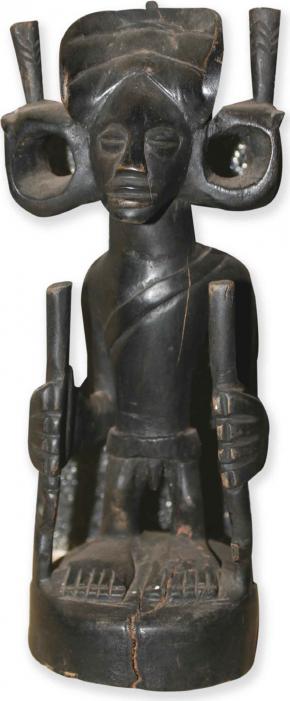 Kundi had succeeded Iala Maku, and now he was getting old. Harmony among the peoples of Lunda was getting strained. Who would succeed the old man Kundi? One of the boys? Tchinguri or Tchinhama? Or the girl, Lwéji, the youngest daughter of his second wife? They say the brothers could not get on together. Tchinguri was more dashing, Tchinhama more thoughtful. However that may be, one day the boys burst into their father’s tchota (palace), drunk as lords on palm wine and went for the old man because both of them wanted to take over. The old man was half blind and dying, but he cursed them and told them there and then that neither of them would take his place. He called the macotas (the elders) and said he was handing over to Lwéji, the boys’ half-sister. And so the Muatyânvua empire started in heh village of Mussumba, with the marriage of Lwéji, the new Lunda queen, to the Baluba hunter Tchibinda Ilunga.
Kundi had succeeded Iala Maku, and now he was getting old. Harmony among the peoples of Lunda was getting strained. Who would succeed the old man Kundi? One of the boys? Tchinguri or Tchinhama? Or the girl, Lwéji, the youngest daughter of his second wife? They say the brothers could not get on together. Tchinguri was more dashing, Tchinhama more thoughtful. However that may be, one day the boys burst into their father’s tchota (palace), drunk as lords on palm wine and went for the old man because both of them wanted to take over. The old man was half blind and dying, but he cursed them and told them there and then that neither of them would take his place. He called the macotas (the elders) and said he was handing over to Lwéji, the boys’ half-sister. And so the Muatyânvua empire started in heh village of Mussumba, with the marriage of Lwéji, the new Lunda queen, to the Baluba hunter Tchibinda Ilunga.
There are a nmber of versions of this empire. They are all interesting, but let’s go for the one written by Sá Vicente the engineer, in his book A Lunda os Diamantes e a Endiama, which was kindly provided for us by another engineer, Cauica. We talked several times with the old people of Lunda-Norte, and although we don’t want to butt in where it’s no business of ours, we would like to appeal to historians to allow us to tell the wonderful tale of this epic again.
As soon as Kundi died, Lwéji took the lukano (the bracelet made of human sinew symbolising power) and straightway becomes leader of the Lundas. Lwéji, or rather the beautiful Lwéji (her name means moon) was a remarkably beautiful young woman but also very intelligent. She ruled the Lundas with the help of the elders until … one day Tchibinga Ilunga appeared from the west. He was a hunter from the Luba race, also a noble, grandson of the founder of the second Luba empire, Mutondo Mukulo (Old Tree). He it was who faced up to the Lundas who came hunting on his lands. Tchibinga Ilunga (Tchibinga means hunter) had no women in his train. There were only men, hunters and warriors. He was not only very daring, he he had also mastered gunpowder and the firearms of the times, the canhangulo (the weapon that shoots through the barrel). This was set to revolutionise the lives of his people, unlike the Lunda people, who were still in the times of the zagaia (bow and arrow). They knew about iron but not about gunpowder.
Lwéji fell head over heels in love with the brave hunter and they got married, which was against the rules. Her people practised endogamy, which meant that you had to marry within the tribe. To make matters even worse, she gave him the bracelet from her ancestors, the one that represented power. Tchinguri, the first born, and his brother Tchinhama were already annoyed at the marriage to the foreigner Ilunga and they turned against their sister when she gave over the bracelet. There was nothing they could do, however, since the power of the Luba warriors and their muskets were far better than the Lundans’ bows and arrows.
But it’s Lwéji who wins again, she bans her brothers, though there are those that say that the brothers made their own decision to leave after their sister had asked Tchibinda to teach them what he knew about guns and gunpowder.
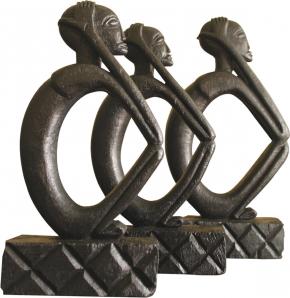 Tchinguri was the more aggressive of the two and he headed west and set up at the gates of Luanda. He was received by the Portuguese governor-general, D. Manuel Pereira Forjaz. They made an alliance and he agreed to help the Portuguese in their struggles with the peoples of the hinterland. For this he received the title of Jaga (Great Chief) and he was offered land in the region of Ambaka and Golungo Alto. He finally settled in the lowlands of Cassanje, where he became the Great Chief of the Bangalas.
Tchinguri was the more aggressive of the two and he headed west and set up at the gates of Luanda. He was received by the Portuguese governor-general, D. Manuel Pereira Forjaz. They made an alliance and he agreed to help the Portuguese in their struggles with the peoples of the hinterland. For this he received the title of Jaga (Great Chief) and he was offered land in the region of Ambaka and Golungo Alto. He finally settled in the lowlands of Cassanje, where he became the Great Chief of the Bangalas.
Tchimhama in the meantime took his aunt Anguina Cambamba and the warrior chief Andumba Uá Tembué and they went up the river Cuango to its source. There they settled and formed the Kiokas or Tchokwe tribes. These are the peoples who were unhappy at the marriage of Lwéji and Tchibinda Ilunga. They split from the Lundas and followed one of the brothers going their separate ways. Other Muatas who went with Tchinhama and Andumba Uá Tembué then left and formed other independent states. This is one of the versions told in Lunda-Norte, but they do not all agree in that neck of the woods, since the Lubas, who are on the side of Tchibinda Ilunga, come out in defence of their hero. The Lundas who stayed with Lwéji and Tchibinda Ilunga defend their queen and those who defend Tchinguri and Tchinhama would certainly have their version of the story, which in fact goes back to the 17th century.
Lunda, of course, is not just important for its history. It has colossal reserves of diamonds. These were discovered in 1912 by prospectors from Forminière, who found 7 diamonds in the Musalala river. This is a tributary of the Chiumbue, near where the town of Dundo is today. In 1917, the Portuguese, who ruled Angola at the time, set up the Daimang company with sole rights to extract and market diamonds in the region. In 1984, the Angolans formed Endiama, which has controlled the Angolan diamond industry ever since.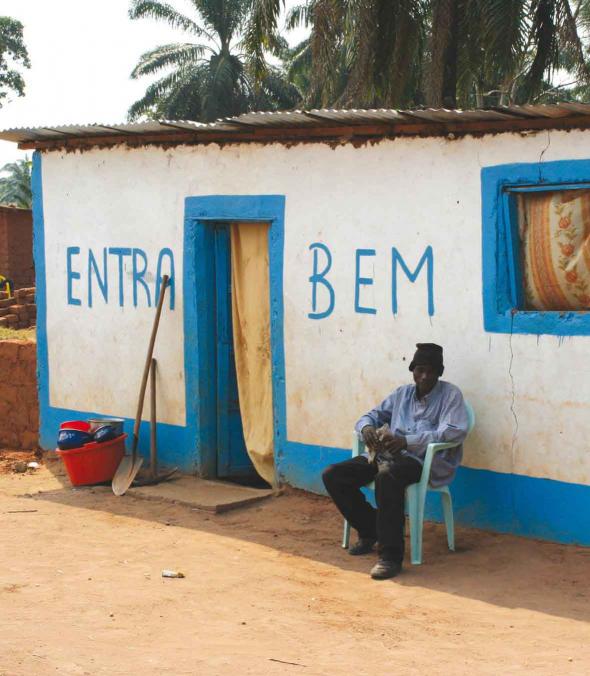
Lunda-Norte covers a massive 103,760 square kilometres and yet the estimated population is only around 800,000, divided into various ethnic groups, among them the Cokwe, Lunda, Kakhongo, or Bandinga, Baluba, Musuku, Bondo Bangala, Khoji, Khari, Xinje Matapa, Bena May, Kakhete and Songo. The Lundans are excellent carvers and theirs is the famous statuette of Samanyonga (Thinker) and of Tchibinda Ilunga, the famous warrior-hunter who married Lwéji.Tchibina is always pictured with a weapon in his hand, while Samanyonga is sitting on his heels, holding his head in thought.
Women are not forgotten in their carvings. The Mwana Pó mask is very beautiful and is seen by Tchokwe artists as something special. It is usually worn by a male dancer dressed as a woman and is a great entertainment in social gatherings, because he imitates the virtues and fantasies of women.
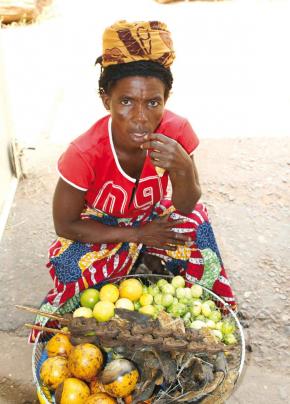
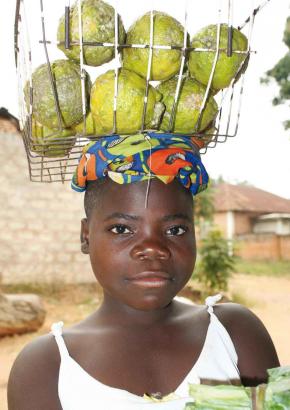
Lunda-Tchokwe men are hunters by nature. They do no farming and give this task to the women. The men spend their time hunting but also doing handicraft, ironwork and even fishing, since fish is abundant in the rivers that flow across the province.
Dancing and music are also very common and are part and parcel of the Lunda-Tchokwe festivities. The most common songs, to the sounds of xylophones and idiofones are Akixi Cianda, Ulengo, Makopo, Cisela, Diximbi, Kundula-Ve, Canga and so on. Players in masks are more for entertainment and the crowning ceremonies of great chiefs. The Akixi and Cikuza are dances mainly for the Mukanda ceremony, which is to celebrate male circumcision. The Cikungu is danced in the investiture of great traditional chiefs.
Today, the capital of Lunda-Norte is Dundo, which was where the Daimang diamond company had its headquarters. A new town is slated to be built, since the colonial structure in the Chitato municipality only has one street with the palace, a hospital and a few stores.
The Dundo Museum
This emblematic centre was created in 1936 to study the culture of the Lunda-Tchokwe peoples and those in the surrounding area. They were potential workers for the powerful mining company.
The work was in the hands of the ethnologist José Redinha and the construction of the museum’s main building was started in 1942, though it was only finished in 1948. There are spaces devoted to ethnography, natural history, archeology and paleontology. There are 14 exhibition rooms, 12 of them permanent, plus one for folklore and the other for temporary exhibitions. The ethnography collection runs to 10 thousand items and it was considered one of the biggest in sub-Saharan Africa.
There are various research works on the Lundu-Tchokwe region, carried out by well-known researchers such as Louise Bastin, Manuel Laranjeira, Henri Breuil and José Redinha.
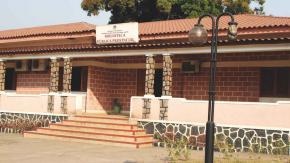
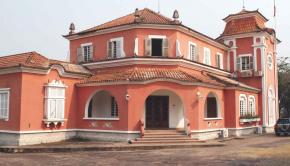 The building has been completely renovated and the rooms for permanent exhibitions are being readied for reopening to the general public. Lunda-Norte is glittering again, like the diamonds drawn from its land.
The building has been completely renovated and the rooms for permanent exhibitions are being readied for reopening to the general public. Lunda-Norte is glittering again, like the diamonds drawn from its land.
in AUSTRAL nº 69, article kindly provided by TAAG - Linhas Aéreas de Angola
photos by Carlos Lousada
BUALA / AUSTRAL - TAAG